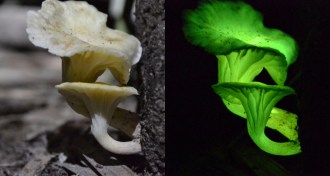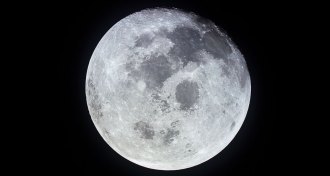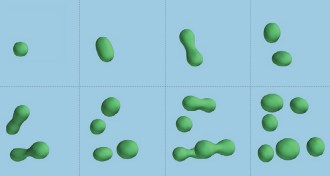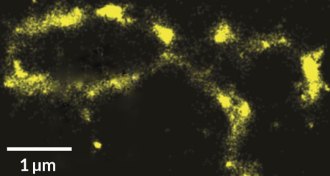Chemistry
Sign up for our newsletter
We summarize the week's scientific breakthroughs every Thursday.
-
 Health & Medicine
Health & MedicineThe opioid epidemic spurs a search for new, safer painkillers
Today’s opioids stop pain — but they’re also dangerous. Scientists are hunting for replacements.
-
 Chemistry
ChemistryChemistry controlled on tiniest scale can create hollow nanoparticles
Oxidizing tiny iron particles from the inside out reveals how oxidation works and could offer new vehicles for drugs or energy.
-
 Life
LifeHow a mushroom gets its glow
For the first time, biologists have pinpointed the compound that lights up in fungal bioluminescence.
By Susan Milius -
 Life
LifeHow a mushroom gets its glow
For the first time, biologists have pinpointed the compound that lights up in fungal bioluminescence.
By Susan Milius -
 Climate
ClimatePlot twist in methane mystery blames chemistry, not emissions, for recent rise
The recent rise in atmospheric methane concentrations may have been caused by changes in atmospheric chemistry, not increased emissions from human activities, two new studies suggest.
-
 Chemistry
ChemistryNew tech harvests drinking water from (relatively) dry air using only sunlight
A prototype device harvests moisture from dry air and separates it into drinkable water using only sunlight.
-
 Planetary Science
Planetary ScienceCompeting ideas abound for how Earth got its moon
The moon may have formed from one giant impact or from about 20 small ones.
-
 Life
LifeLife on Earth may have begun as dividing droplets
Chemical droplets could split and reproduce in the presence of an energy source, new computer simulations suggest.
-
 Chemistry
ChemistryNew, greener catalysts are built for speed
Researchers are designing catalysts to move chemical reactions without using precious metals, or at least using less of them.
-
 Life
LifeNew imaging technique catches DNA ‘blinking’ on
Dye-free imaging technique zooms in below 10-nanometer threshold, allowing new cellular views.
-
 Chemistry
ChemistryHelium’s inertness defied by high-pressure compound
At pressures over a million atmospheres, helium reacts with sodium.
-
 Oceans
OceansFleeting dead zones can muck with seafloor life for decades
Low-oxygen conditions can fundamentally disrupt seafloor ecosystems and increase carbon burial, new research shows.